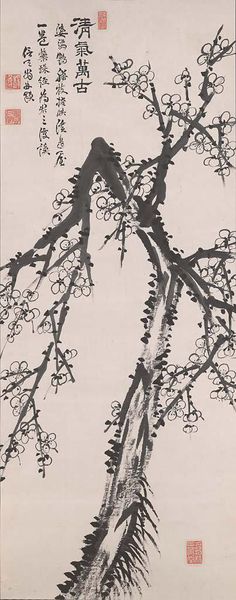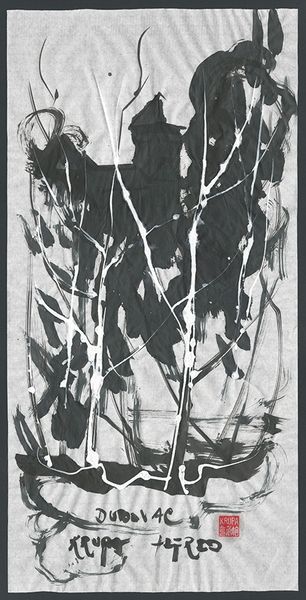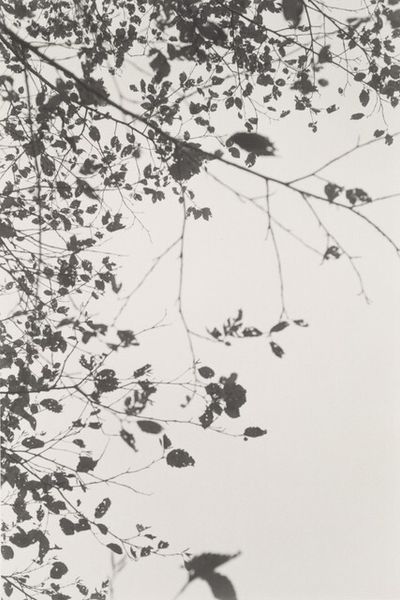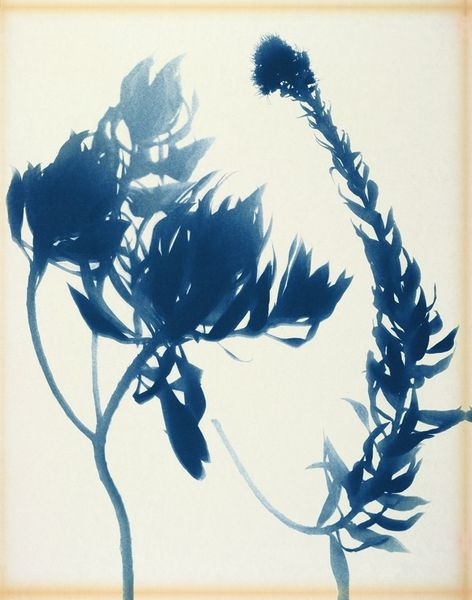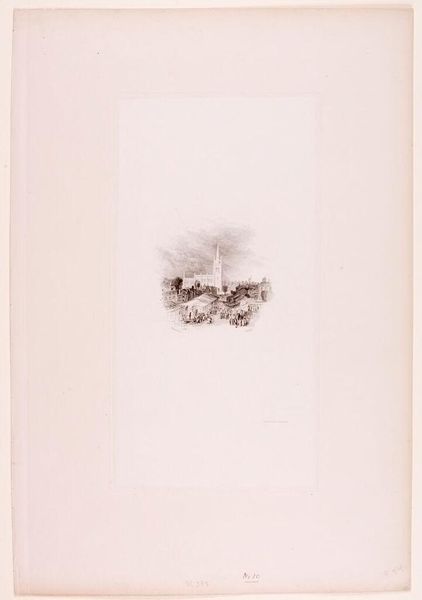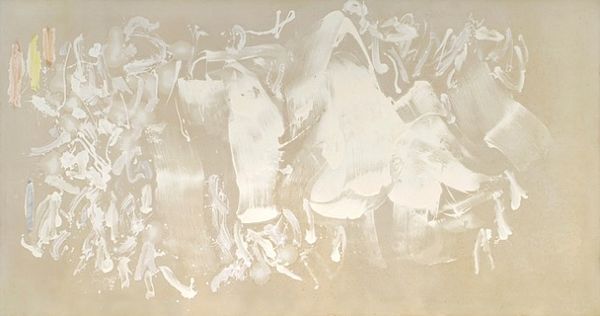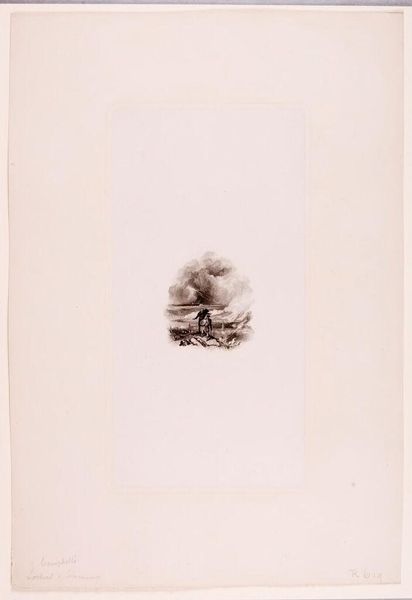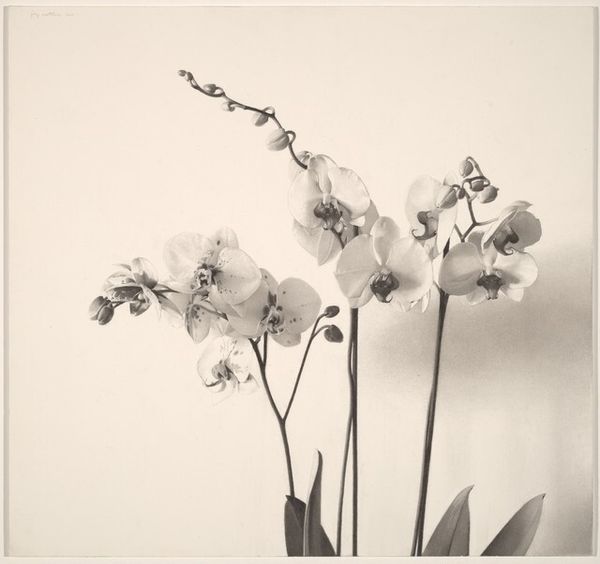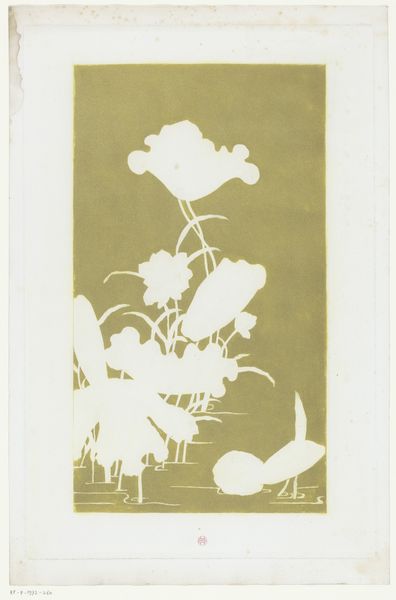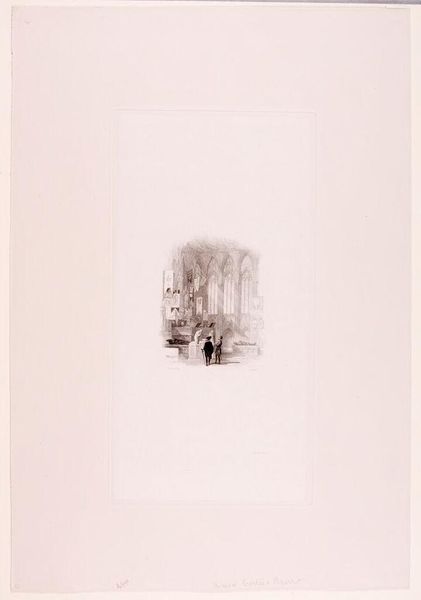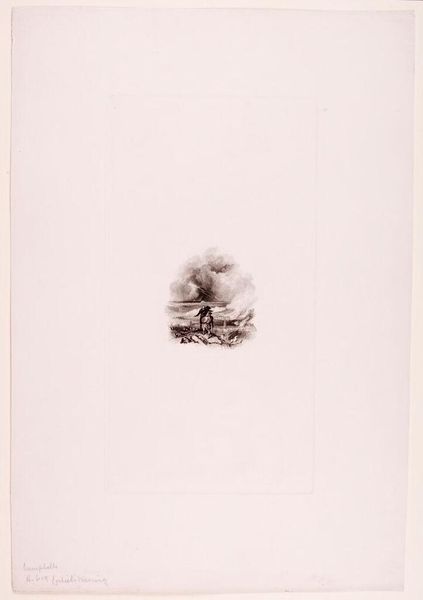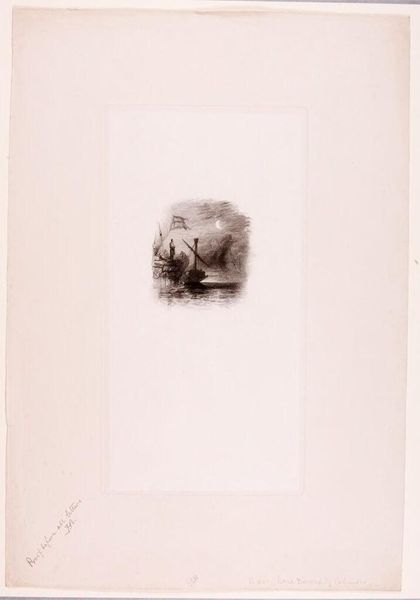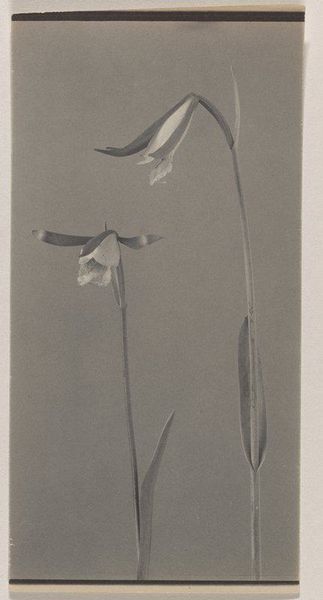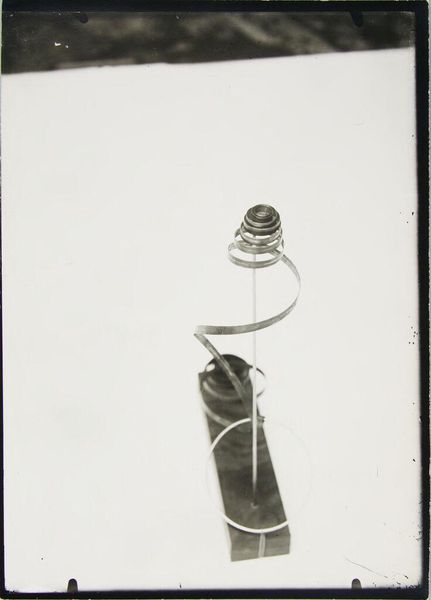
cyanotype, photography
still-life
photo of handprinted image
still-life-photography
flower
cyanotype
photography
plant
Copyright: Lourdes Castro,Fair Use
Curator: Let’s take a look at Lourdes Castro’s “Anaphalis Margaritacca” from 1972. It's a still-life photograph rendered in cyanotype. Editor: It strikes me as delicate and almost ghostly, the stark blue against the pale ground, like a memory caught in light. The composition feels both formal and transient. Curator: The cyanotype process itself is interesting. It's an early photographic printing method that relies on the sun. The labor involved in preparing the chemicals, coating the paper, arranging the plant, and carefully controlling the exposure connects it to pre-industrial forms of making, contrasting the mechanization of later photographic practices. It speaks to a hand-crafted approach within the realm of photography. Editor: Absolutely. The choice of cyanotype lends a distinctive aesthetic. Notice the tonal range within the blue, creating depth and highlighting the textures of the flora and the glass container. There is a tension between flatness and depth. Curator: Given Castro's broader practice, I wonder about her interest in reproduction here. Was she thinking about botanical illustration versus the immediacy of photography? And what of the still-life tradition itself – traditionally associated with domesticity and often gendered female – is Castro intervening in these discourses? Editor: Good point. Semiotically, the arrangement also contributes. The slightly tilted vase, the arrangement of stems--it directs your eye through a carefully orchestrated visual pathway, hinting at fragility, temporality and life cycles. The artist brings attention to composition. Curator: It makes one think about her social position as an artist too, living and working across different cultures. She’s using accessible means in what one may consider printmaking techniques. This expands access for creating art, questioning who art making is for. Editor: Right. Seeing it as a play between technique and the inherent formal beauty within a commonplace subject recontextualizes what constitutes both fine art and accessible material. Curator: I am considering how deeply material the making of photographs once was, too. Thanks, I'm appreciating its visual appeal now as well. Editor: Exactly, reflecting on technique while exploring beauty is rewarding!
Comments
No comments
Be the first to comment and join the conversation on the ultimate creative platform.
